
The popular Land Rover Discovery Sport is now available as a plug-in hybrid in the form of a P300e. Can this electrified SUV boost its already wide appeal?
Land Rover’s range of vehicles has grown exponentially over the past 30 years. Turn the clock back and the Defender, Discovery and Range Rover were what it had to offer, but today its model count is a mind-boggling seven core vehicles – each with multiple derivatives. The Land Rover Discovery Sport is amongst the most popular, and now there’s a new plug-in hybrid option.
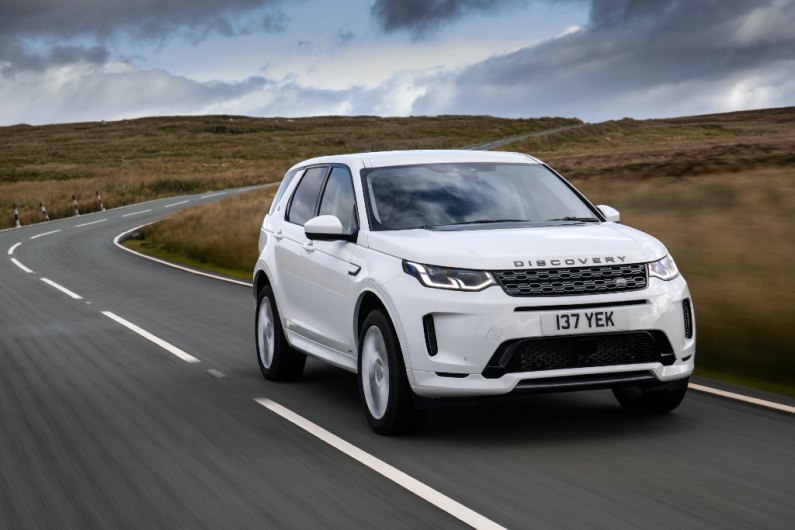
Used as designed, plug-in hybrids are the best solution for those who want to go electric, but retain the flexibility of combustion power. Over the coming years you’ll see an increasing number of mild-hybrids, but there are some great ‘best of both worlds’ benefits to plugging-in. The Discovery Sport PHEV utilises a new 1.5-litre three-cylinder petrol engine to power the front wheels while an electric motor and a 15kW battery back gives life to the rear axel – effectively making this model all-wheel drive.
The Discovery Sport P300e can accept a series of different charging solutions such as a household three-pin plug, however, this will take just shy of seven hours. A 7kW wallbox will get this Disco juiced in under an hour and a half, but find a fast charger and you can charge from 0-80% in 30 minutes. A full charge allows for up to 38 miles of driving in pure electric bliss dependant upon your car’s specification, but we’ll get onto the Land Rover’s trio of modes later.

For those who love the way the Land Rover Discovery Sport looks, the good news is that the PHEV is practically identical. This well proportioned SUV retains its stout stance and design language extrapolated from the big Discovery – minus the wonky numberplate. It delivers on a rugged silhouette, premium styling and a compact enough form factor that it appeals to those who wouldn’t want anything bigger. Small wonder it has been a hit since first introduced in 2014.
Our test car was an S in R-Dynamic trim, meaning that in addition to the car’s healthy standard equipment list you get black exterior detailing, scrolling indicators at the back, 18-inch alloy wheels and sporty bumpers. A few added extras sprinkled on this model included 20-inch alloy wheels, sophisticated Natural Shadow oak veneer and Land Rover’s clever ‘Clear Sight’ rear view camera that’s integrated into the interior mirror.
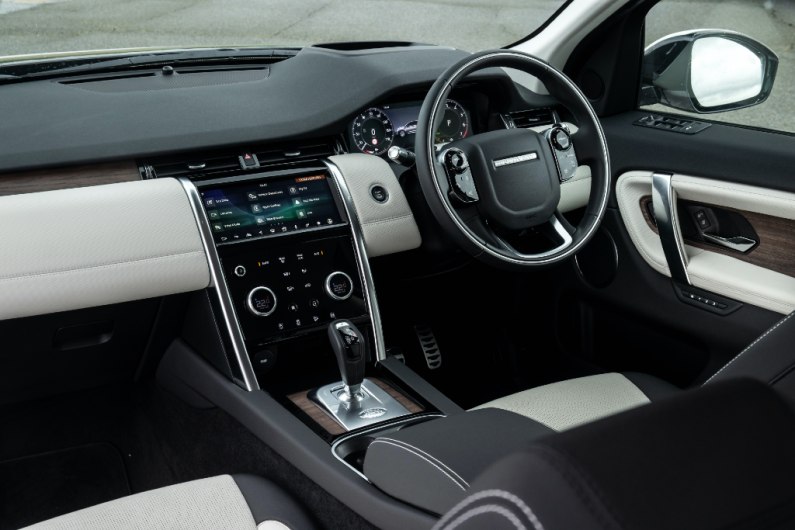
The cabin is a good blend of durable materials and premium design. Visually, it looks upmarket – especially with the oak veneer, and cream surfaces. The layering of these materials creates a rather homely effect that’s certainly a good trait to have. There are hardier plastics to be found below the knee, but a few years of muddy school shoes and dog hair will likely prove it to be the correct material choice.
If you order a Discovery Sport PHEV right now you’ll get Jaguar Land Rover’s excellent Pivi infotainment system that marks a big improvement on what came before. However, our early test car features an old Touch Duo screen, which is fine, but clearly outdone by the system that replaced it. A secondary screen located below is the same though, and offers a graphically rich means of accessing various car submenus without cluttering the primary screen. A pair of physical dials are also nicely integrated. As visually impressive as this second screen is, it can be tricky to use when driving.
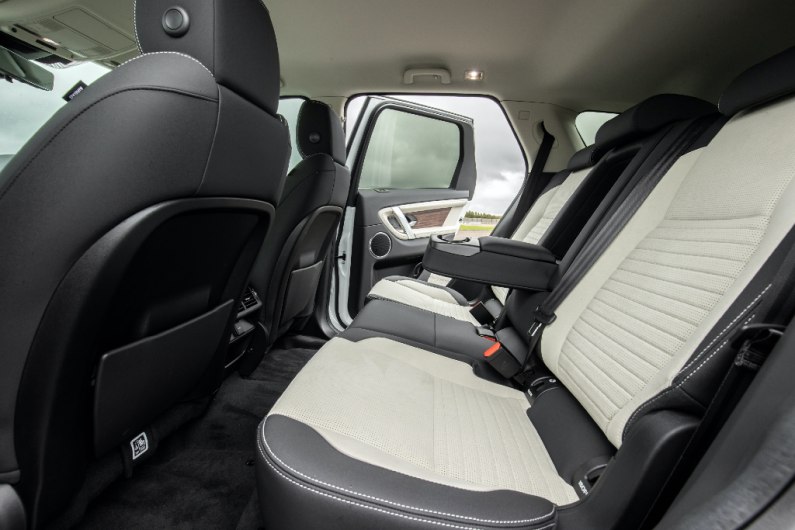
The rear bench seats three and can be adjusted to recline and slide. In their neutral position there’s plenty of space for all shapes and sizes, both in terms of head and leg room. A third row can be optioned to facilitate two deployable jump-seats. These are really only suitable for children, but it does give the Discovery Sport the option of being a seven-seater. With the third row folded flat, or indeed absent, 897-litres of boot space is available. Need to clear the garage? Fold the third row flat and 1,794-litres is yours to fill with old bikes and lawn mowers that haven’t run in years.
Ok, so what about those aforementioned drive modes? There are three… EV, Hybrid and Save.
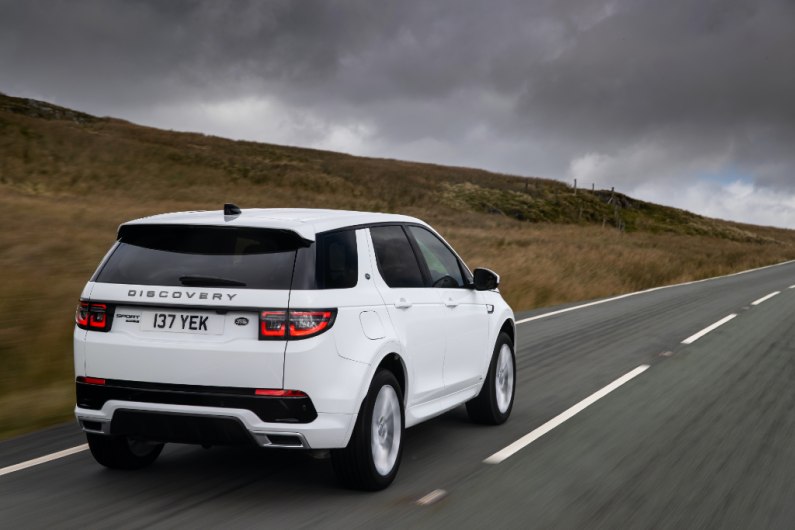
In EV mode the Disco Sport runs purely on electricity unless abruptly putting your foot to the floor to demand more power. Acceleration is dished out in a measured and sensible way from the 107bhp electric motor, as opposed to the neck-snapping motion Tesla owners like to demonstrate. Life is peaceful in this setting with the lack of an engine providing a tranquil environment to travel. You can go about your business at speeds of up to 84mph in EV, meaning that most journeys, including the average commute, can be done without burning a drop of fuel.
Hybrid mode combines the petrol engine and the electric motor to provide added efficiency. The car will use electric power much of the time at low speeds, but turn up the pace and the voltage then serves to support the three-cylinder engine. The combustion part of this equation is smooth enough, but can be a little harsh sounding under hard acceleration. Once up to speed the engine is much quieter. Overall responsiveness is good thanks to the electric motor assisting, but again, don’t expect that instant supercar shaming acceleration of some EVs. 0-62mph in 6.6 seconds is quite enough for this sort of car.
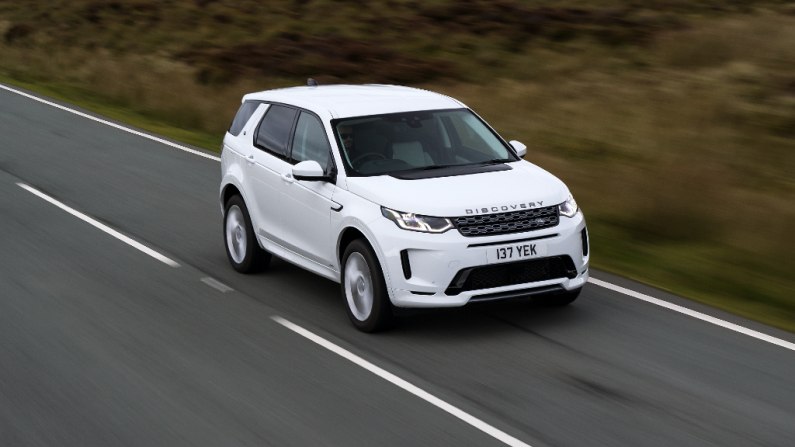
Save mode does what it says on the tin, it saves the designated battery power for whenever you chose to deploy it – maybe when you reach a town? Additional electric energy harvested through deceleration will still be used to help power the car in combination with the petrol engine, but the desired battery level will be retained.
In the went and windy conditions of our testing, the reassurance of all-wheel drive was welcome. Some localised flooding on faster roads revealed that a sturdy demeanour was retained when hitting standing water. Driving with a bit of verve isn’t particularly rewarding thanks to the lack of driver feedback somewhat isolating those behind the wheel, and the notable body roll doesn’t exactly encourage that sort of behaviour either.
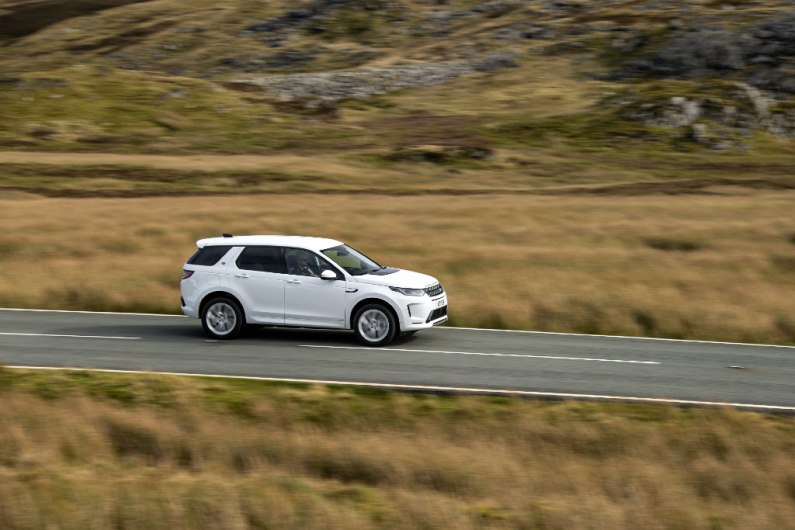
Settling down into a steady cruise and the natural rhythm of the Discovery Sport is a pleasant one. This is a nice easy car to drive where your commanding driving position makes for a relaxing crow’s nest to sail onwards to your destination. The larger alloy wheels of our test car introduced a firmer ride on potholed roads, however, light steering makes it easy to manoeuvre this SUV around congested areas.
We’ve talked a lot about the car’s on-road capabilities here, but let’s not forget its class-leading off-road talent that makes the Discovery Sport a magnificently versatile machine. Previous ventures onto the rough stuff in one of these vehicles left us impressed, especially when pair with the appropriate tyres.
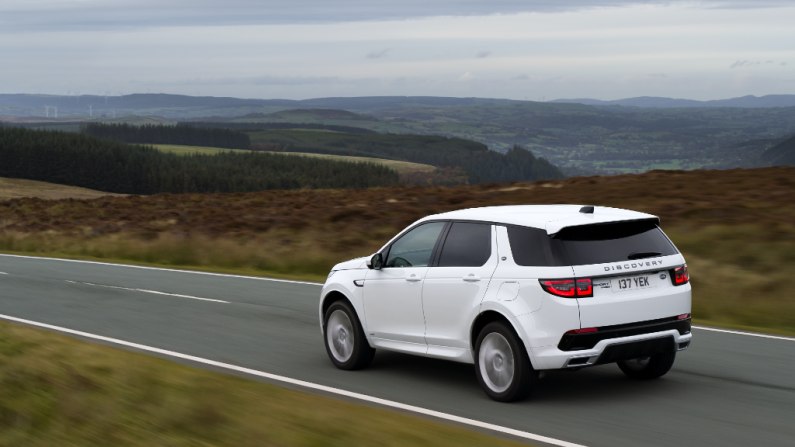
We think the PHEV will quickly become the default choice for buyers with space on their driveway for charging. It allows for guilt-free commuting, low BIK rates, but maintains all of the characteristics that draws people to a Discovery Sport.
Facts and figures
Model tested: Land Rover Discovery Sport R-Dynamic S P300e PHEV
Price: £47,000
Engine: 1.5-litre three cylinder + electric motor
Transmission: 8-speed automatic
Power / Torque: 305bhp / 540Nm
0-62mph: 6.6 seconds
Top speed: 130mph
Seating: 5 / 7
Boot space: 897-litres
EV only range: Up to 38-miles (dependant upon specification)
Charging: 0-80% 7kW wallbox 1 hour and 24 minutes, 0-80% fast-charge 30 minutes, 0-80% three-pin plug 6 hours and 42 minutes.
MPG: 175.5mpg
CO2: 36g/km (dependant upon specification)

